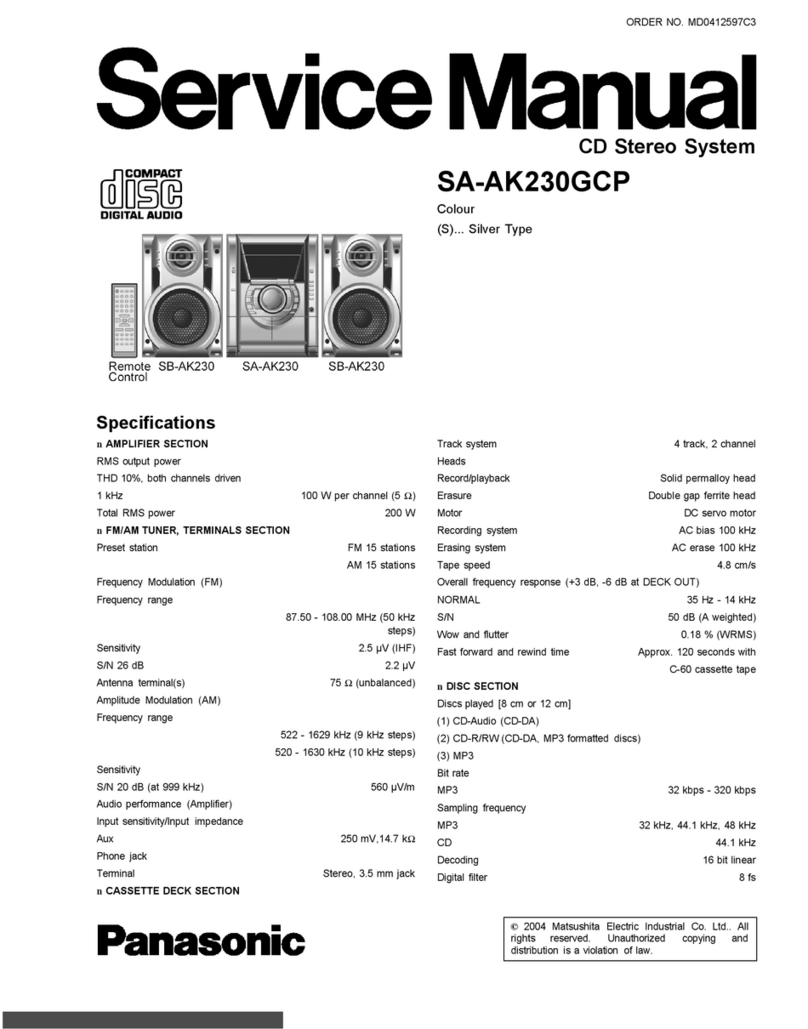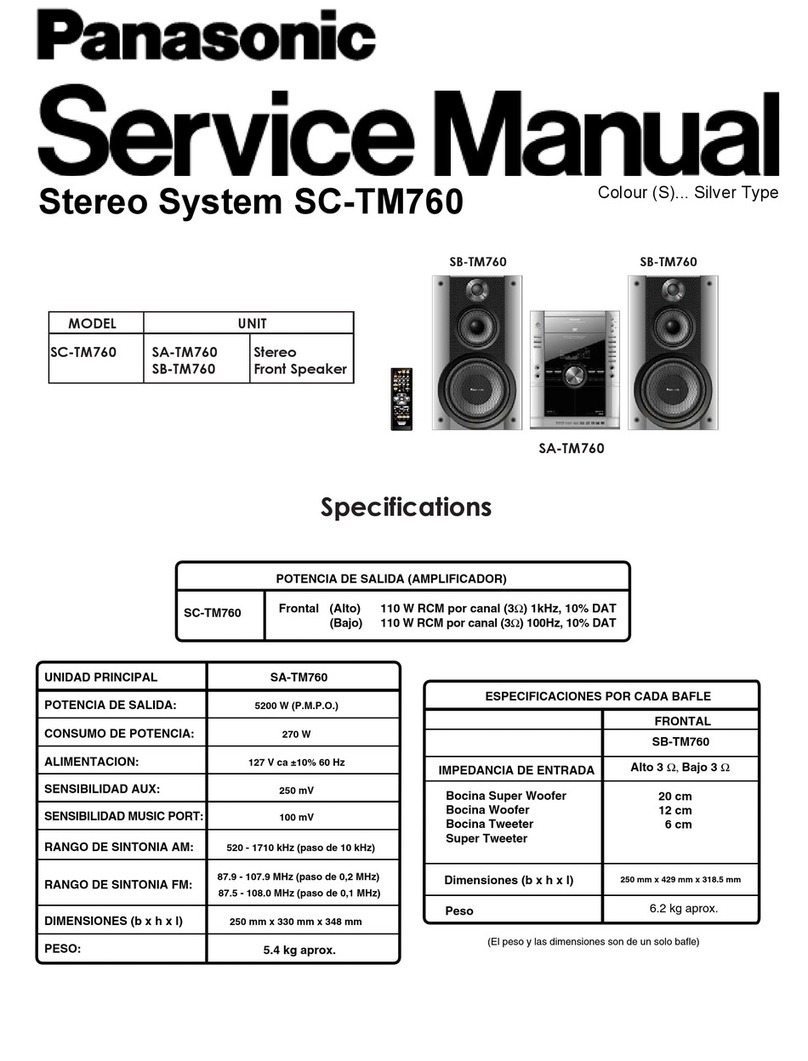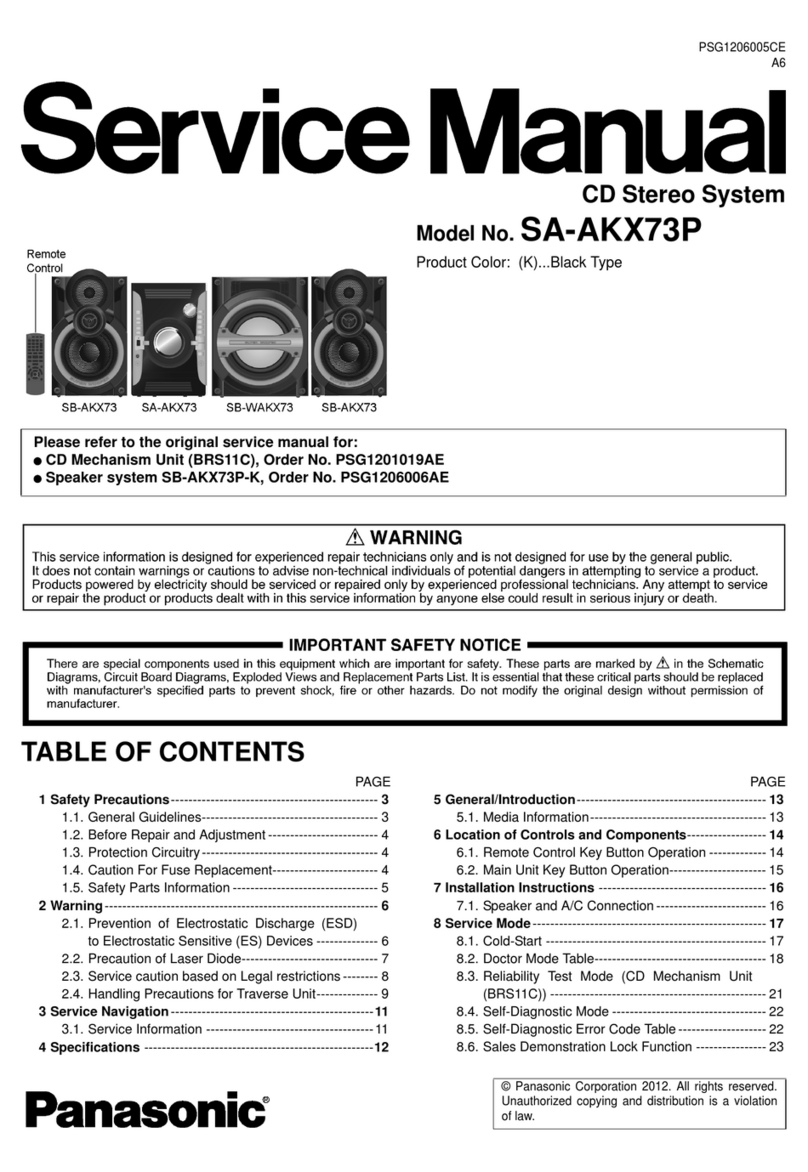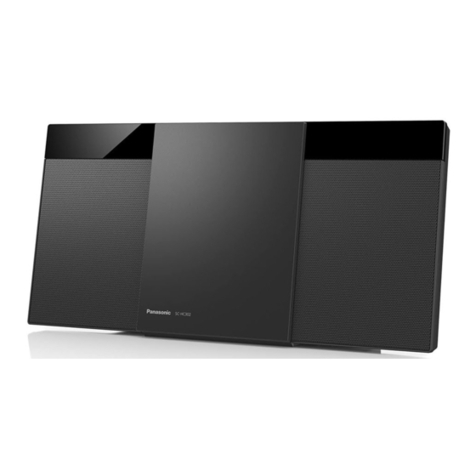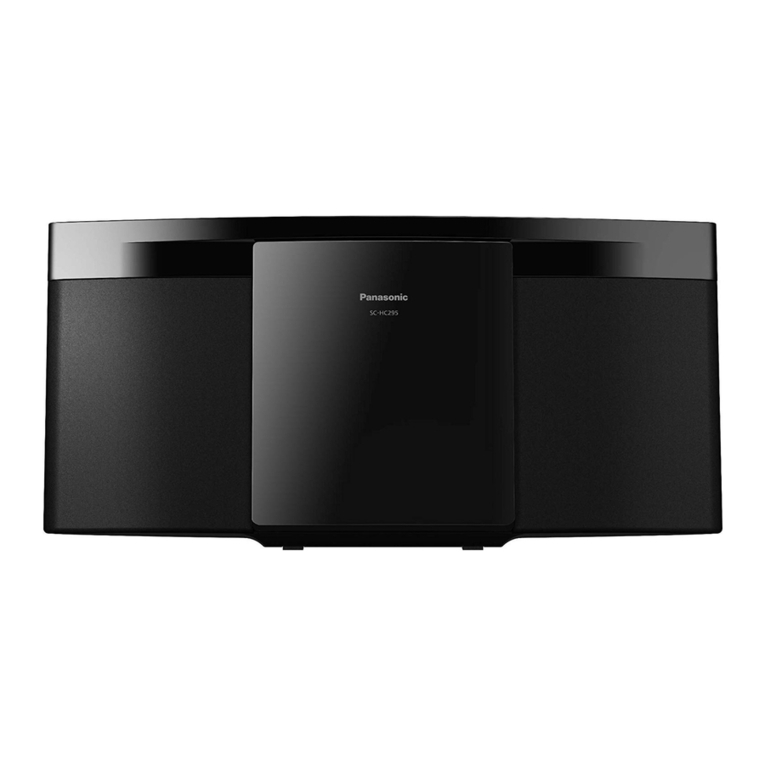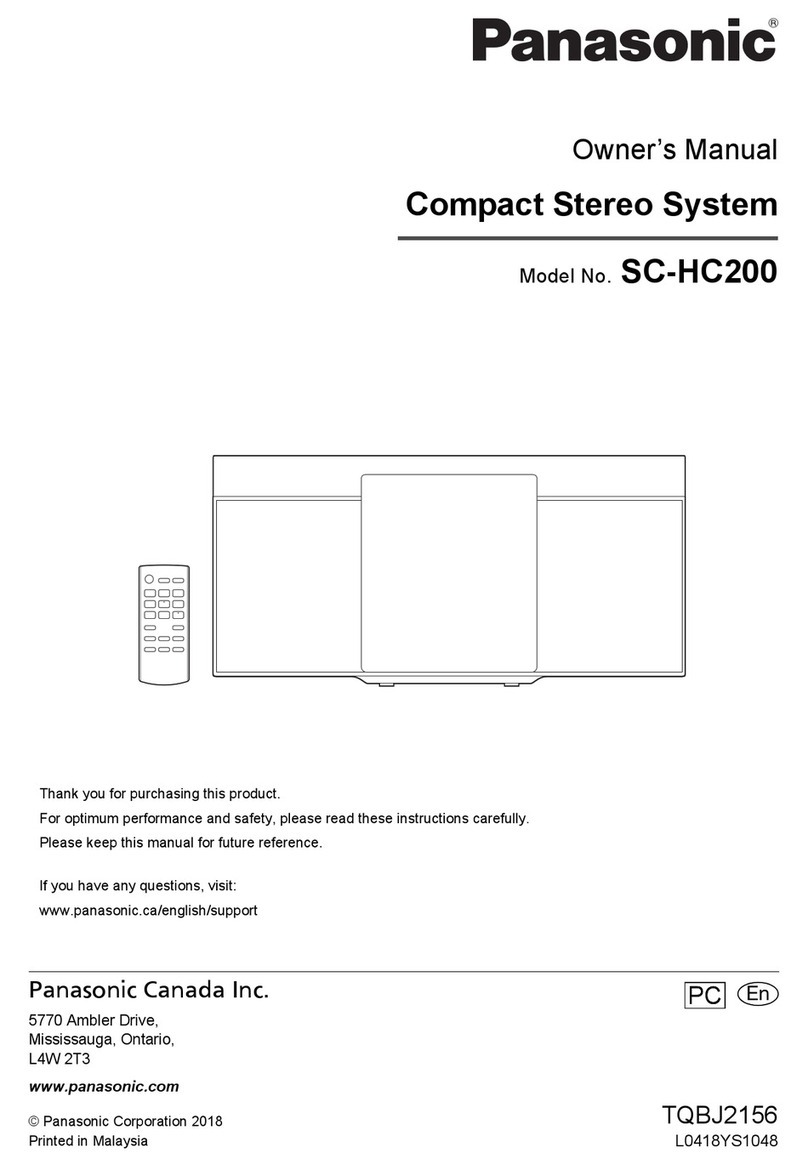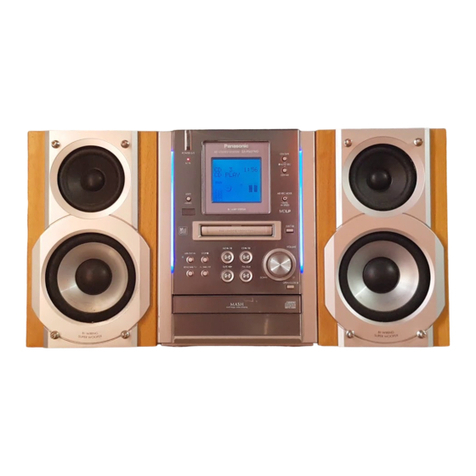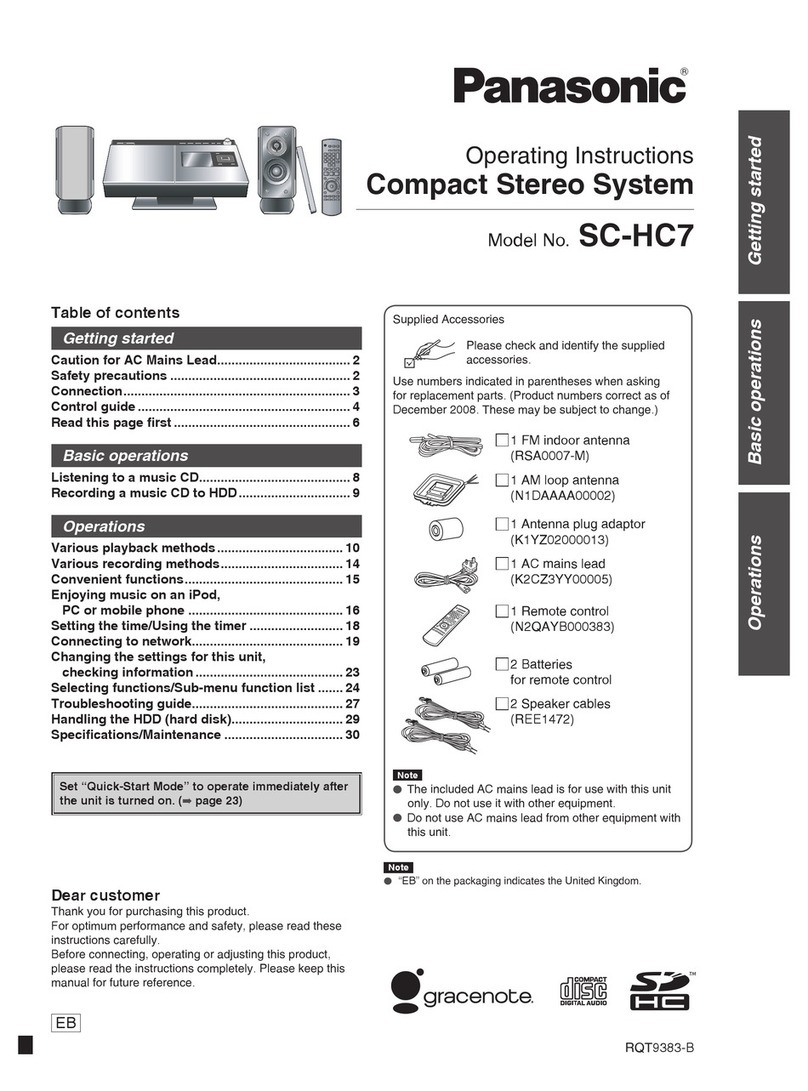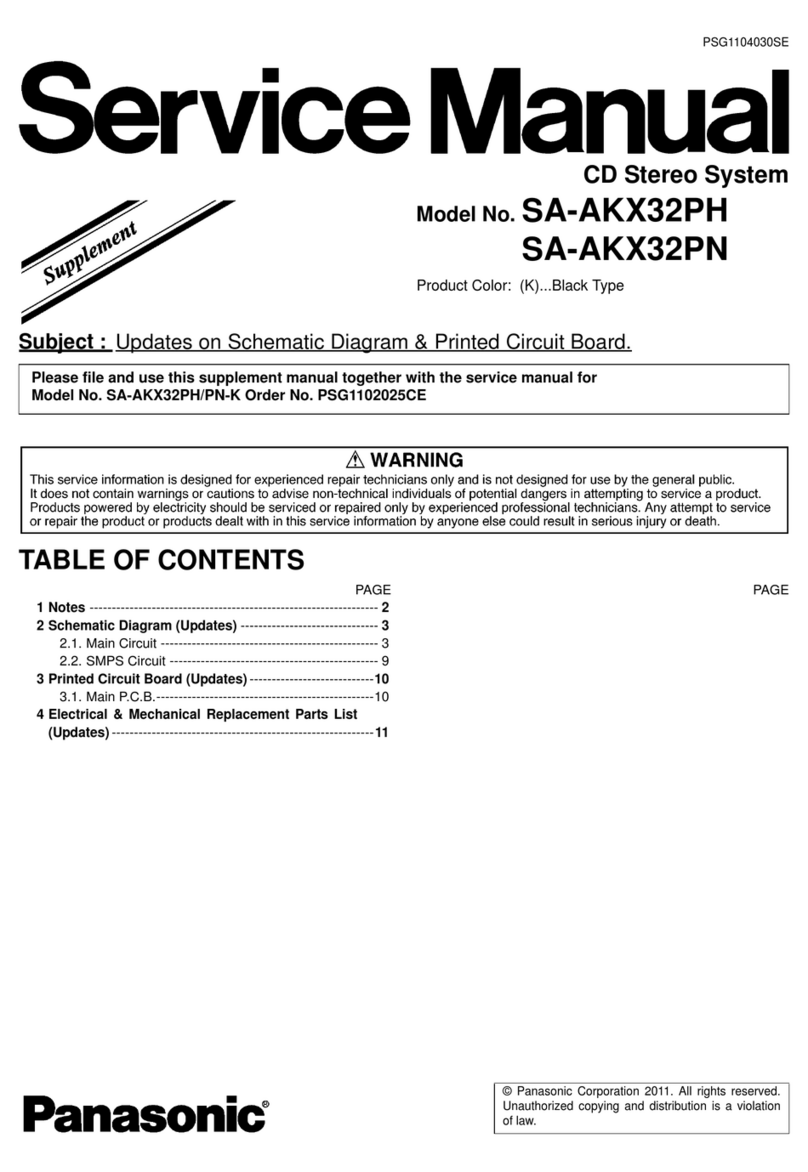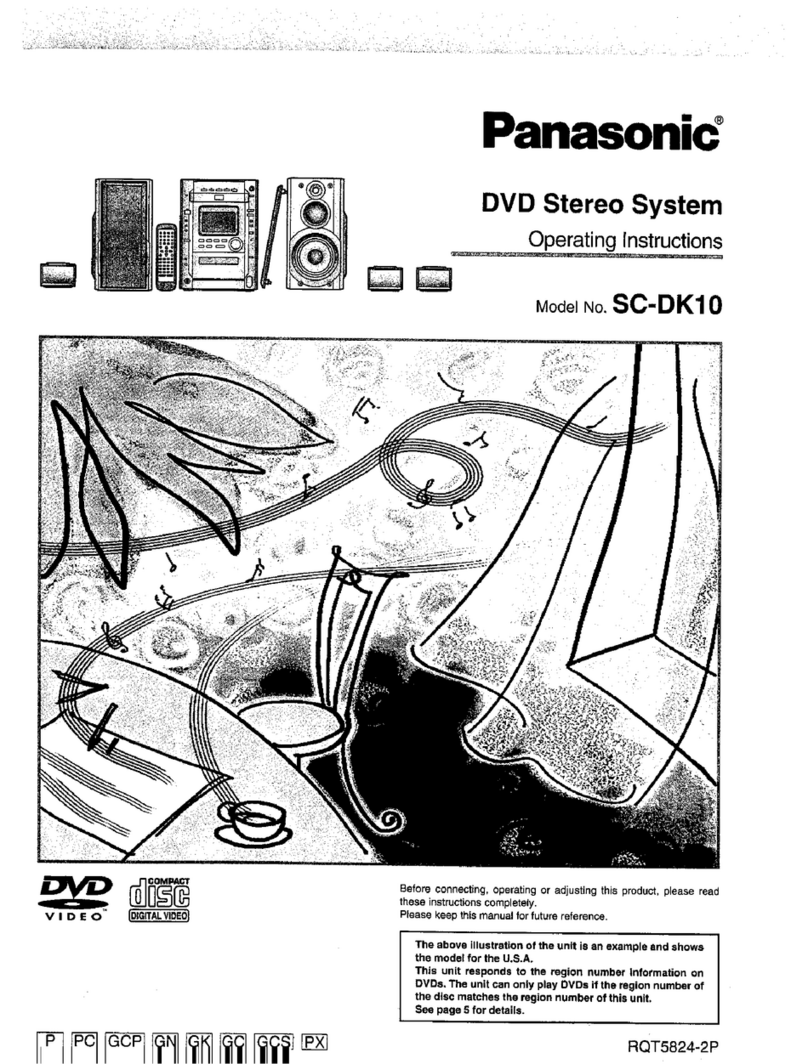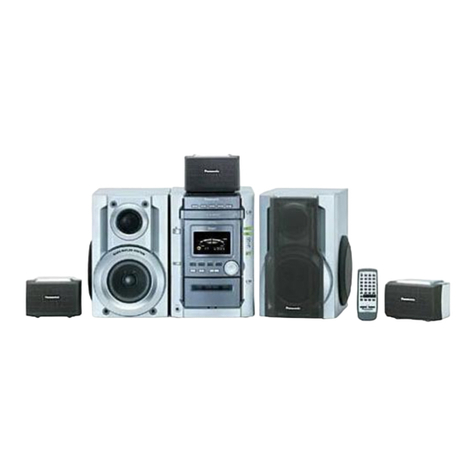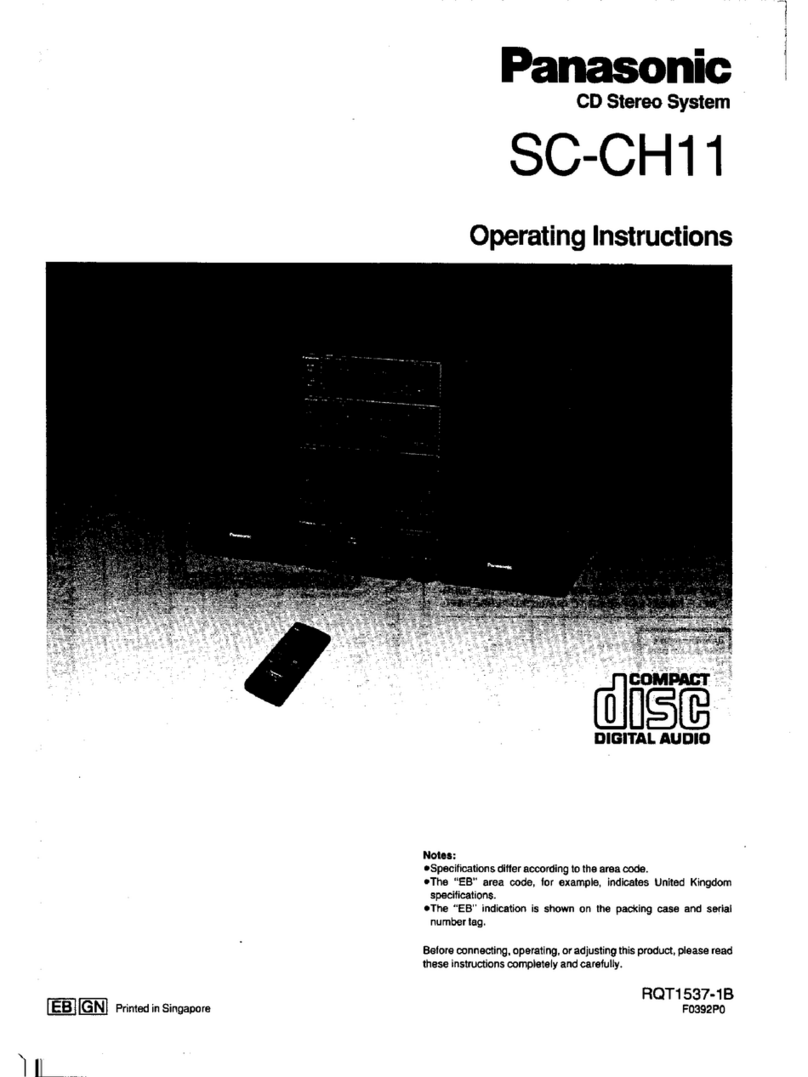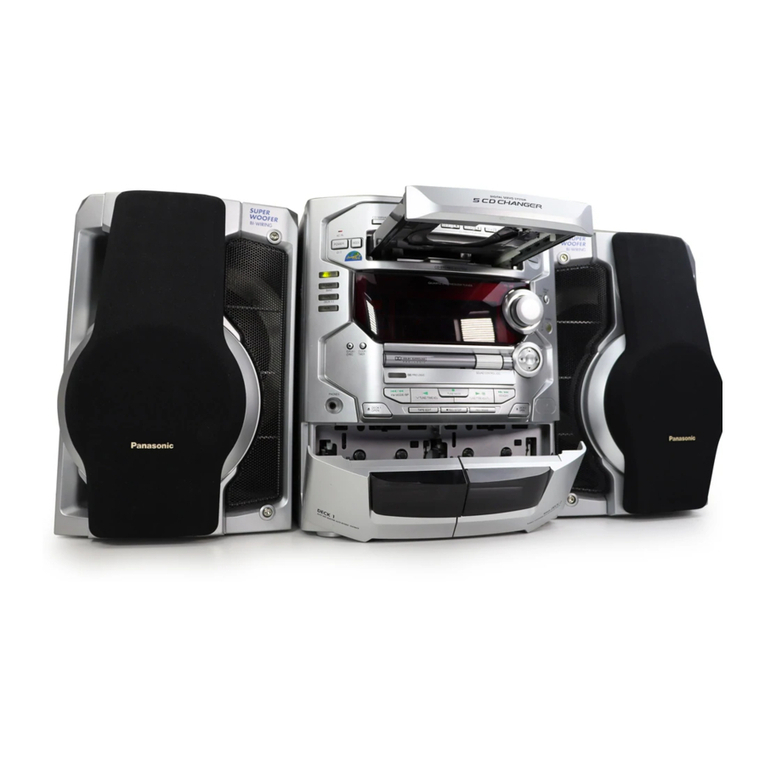
/
P
_o
RQT6085
IMPORTANT SAFETY INSTRUCTIONS
Read these operatinginstruclfenscarefullybefore usingthe unit. Followthe safety instructionson theunit and the safety precautionslistedbelow.
Keep these operatinginstructionshandyfor future reference.
1. Power soume-_onnect the unit to a power source of the type
described in these instructions or as marked on the unit.
2. Polarization--The unit is equipped with a polarized power plug
where one blade is wider than the other. This safety feature
ensures that the plug fits intoyour household AC outlet only one
way. If the plug doesn't fit one way, try reversing it. If the plug
still doeso't fit, contact an electrician to replace the obsolete
outlet. Do not attempt to defeat the safety purpose of the plug.
3. Power cord protection--Route the AC power supply cord so
that it will not be walked on or pinched by items placed on or
against it. Never take hold of the plug or cord with wet hands.
Always grasp the plug body firmly when connecting and
disconnecting it.
4. Overloading--When connecting the AC power supply cord, be
careful not to overload the household AC outlet, extension cord,
oroutlet from any other device as this can result in fire or electde
shock.
5. Nonuse periods---Turn the unit offwhen it is not in use. Unplug
the unit from the household AC outlet if it is not to be used for a
long time. Unplug the unit during lightning storms.
6. Attachments and accessories---Use only the attachments and
accessories recommended in these operating instructions.
4. Outdoor antenna grounding--If you connect an outdoor an-
tenna, ground the antenna system to protect against voltage
surges and built-upstatic charges. Section 810 of the National
Electrical Cobs, ANSI/NFPA No. 70-1990, provides information
about groundingof the mast and supportingstructure, grounding
of the lead-in wire to an antenna discharge unit, size of ground-
ing conductors,iocafion of antenna-discharge unit,connection to
grounding electrodes, and requirements for the grounding elec-
trode. Refer to this diagram.
__ ANTENNALEAD
IN WIRE
_7 ANTENNA
DISCHARGE UNIT
(NEC SECTION 810-20)
GROUNDING CONDUCTORS
J* (NEC SECTION 810-21)
GROUND CLAMPS
POWERSERVICEGROUNDING
ELECTRODESYSTEM
(NECART 250, PARTH)
NEC-NATIONAL ELECTRICAL CODE
I Placement
1. Ventgation--Situate the unitsothat it receives proper ventilation.
DOnot install ina confined space such as a bookcase or cabinet.
Allow at least 10 cm (4 inches) clearance from the rear of the
unit. To preventthe nsk of eleCtricshock or firedue to overheating
ensure curtains and other matedals do not obstruct the unit's
ventilation.
2. Foreign material--Ensure objects and liquids do not get into
the unit. Avoid exposing the unit to excessive smoke, dust,
mechanical vibration, and shock.
3. Magnetism--Situate the unit away from equipment and devices
that generate strong magnetic fields.
4. Stacking--Do not place heavy objects on top of this unit.
5. Surface--Place the unit on a flat, level surface.
6. Carts and stands--Use the unit only with carts
and stands recommended by the manufacturer.
Move carts with care. Sudden stops, excessive
force, and uneven surfaces can cause carts to
overturn.
7. Wall and ceiling mounting--Do not mount the unit on walls or
ceilings unless specified in the instructions.
I Environment
1. Water and moisture--Do not use the unit near water, such as
near abathtub or swimming pool. Avoid damp basements.
2. Neat--Situate the unit away from heat sources, such as radiators.
Do not situate where temperatures fall below 5°O (41°F) or dse
above 35°C (95°E).
3. Power lines--Take care when setting up an outdoor antenna
that it is not near overhead power lines, electric lights, or electri-
cal circuits, and that there is no danger of the antenna falling on
power lines, electdc lights, or electdcal circuits. When installing
an outdoor antenna, take extreme care not to touch such power
lines or circuits, as contact with them can be fatal.
(See back cover for details.)
Unplug the unit from the household AC outletbefore cleaning.
Clean with a damp cloth.
Do not use abrasive pads, sooudng powders, or solvents.
1. Damage requiring service--The unit should be serviced by
qualified service personnel if:
(a)The AO power supply cord or the plug has been damaged; or
(b)Objects or liquids have gotten into the unit;or
(c) The unithas been exposed to rain; or
(d)The unit does not operate normally or exhibits amarked
change in performance;or
(e)The unithas been dropped or the cabinet damaged.
2, Servicing--Do not attempt to service the unit beyond that
descdhed in these operatinginstructions.Refer all other servicing
to authodzed servicingpersonnel.
3. Replacement parts--When parts need replacing ensure the
servicer uses parts specified by the manufacturer or parts that
have the same characteristicsas the odginal parts. Unauthonzed
substitutesmay resultin fire, electric shock, or other hazards.
4. Safety check--After repairs or service, ask the servicer to
perform safetychecks to confirmthat the unit is in proper working
condition.
